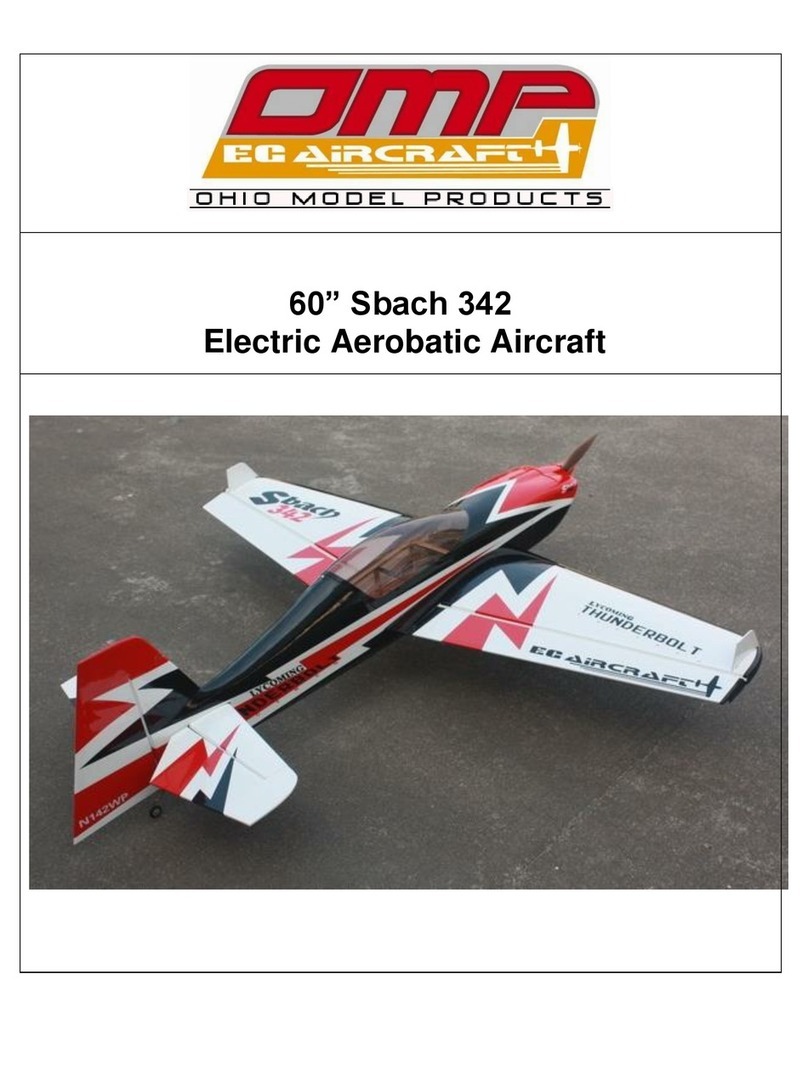
Thank you for purchasing the OMP Fusion Profile. In our continuing effort to bring the best in
performance to our customers, we have redesigned the highly popular 67” Fusion into a 70” model for both
electric and gas/glow versions. The Fusion was the first profile designed to perform precise and crisp pattern
and IMAC maneuvers effortlessly yet still retain the capability to let out all the stops for ultimate 3d flying.
Now you can evolve your flying skills to a new level without having to spend a fortune on an expensive pattern
or IMAC airplane as the Fusion offers the best of both worlds to the sport flyer at every level. You can learn
precision and 3D aerobatics at a very reasonable cost using reasonably priced radio equipment and readily
available glow or gas size sport motors and E50 size electric motors. Our Fusion offers the perfect blend of
aerodynamic design parameters which allow you to perform anything you can imagine: F3A pattern, IMAC
sequences, elevators, positive and inverted harriers, waterfalls, knife edge spins, positive and inverted flat spins,
and of course rock solid hovers and torque rolls. I hope you will enjoy the Fusion X3D Profile as much as we
have – Mike Pilkenton and John Drake.
A QUICK WORD ABOUT SAFETY AND RADIO CONTROL FLYING MODELS
With radio control aircraft, like any hobby or sport, there are certain risks. The operator of these models
is responsible for these risks. If misused or abused, you may cause serious bodily injury and/or damage to
property. With this in mind, you will want to be certain that you build your model carefully and correctly. If
you are not an experienced flier, have your work checked and ask for help in learning to fly safely. This model
aircraft is not a toy and must be operated and flown in a safe manner at all times. Always perform a pre-flight
check of the model including all control surfaces, proper function of the radio gear, structure, radio range, and
any other area relating to the safe operation of this aircraft.
Models are not insurable but operators are. You can obtain coverage through membership in the
Academy of Model Aeronautics (AMA). For an AMA information package call 1-800-435-9262, ext. 292 or
visit the AMA website at "www.modelaircraft.org".
OHIO MODEL PRODUCTS GUARANTEE AND CUSTOMER SERVICE
Ohio Model Products guarantees this ARF to be free from defects in both material and workmanship at the
date of purchase. This does not cover any parts damaged by use, misuse, modification, or long term storage. In
no case shall OMP's liability exceed the original cost of this kit. Because OMP has no control over the final
assembly or equipment/components used in the final assembly, no liability shall be assumed for any damage
resulting from the use of this model by the user. By the act of using the final assembled model, the user accepts
all resulting liability. If at the time of purchase, you should find any missing or damaged parts, or have any
questions
about
this
product,
please
contact
us
at
[email protected] or call OMP at (937) 372-0603.
ENGINES, PROPELLERS AND MUFFLERS
The recommended engine range for the Fusion is a 1.20 glow, a 20 cc gas, or E50-E60 size electric
motors that will produce 1900-2100 watts. There are a tremendous variety of engines available and each type
has its own advantages and disadvantages. Selecting the proper size of propeller for your particular engine is a
very important part of the whole set up. The Fusion, as all high performance 3d aircraft, was designed to use
low pitch props. What you need is air flow and vertical performance, not straight-line speed. We recommend
using the lowest pitch, highest diameter propeller you can find for your particular engine. The use of high pitch
props can cause air "cavitation" around the prop blades during hovering or slow vertical maneuvers. Air
cavitation may sound neat but it's not what you want because the prop is no longer biting into "clean air" and
you may loose altitude very quickly; so be wise when selecting your prop. Also, please be aware that the power
available in today's engines, while tremendously advantageous for 3d flying, can quickly lead to over speeding
the plane. Manage your throttle wisely to prevent over speeding and stressing the airframe.





























